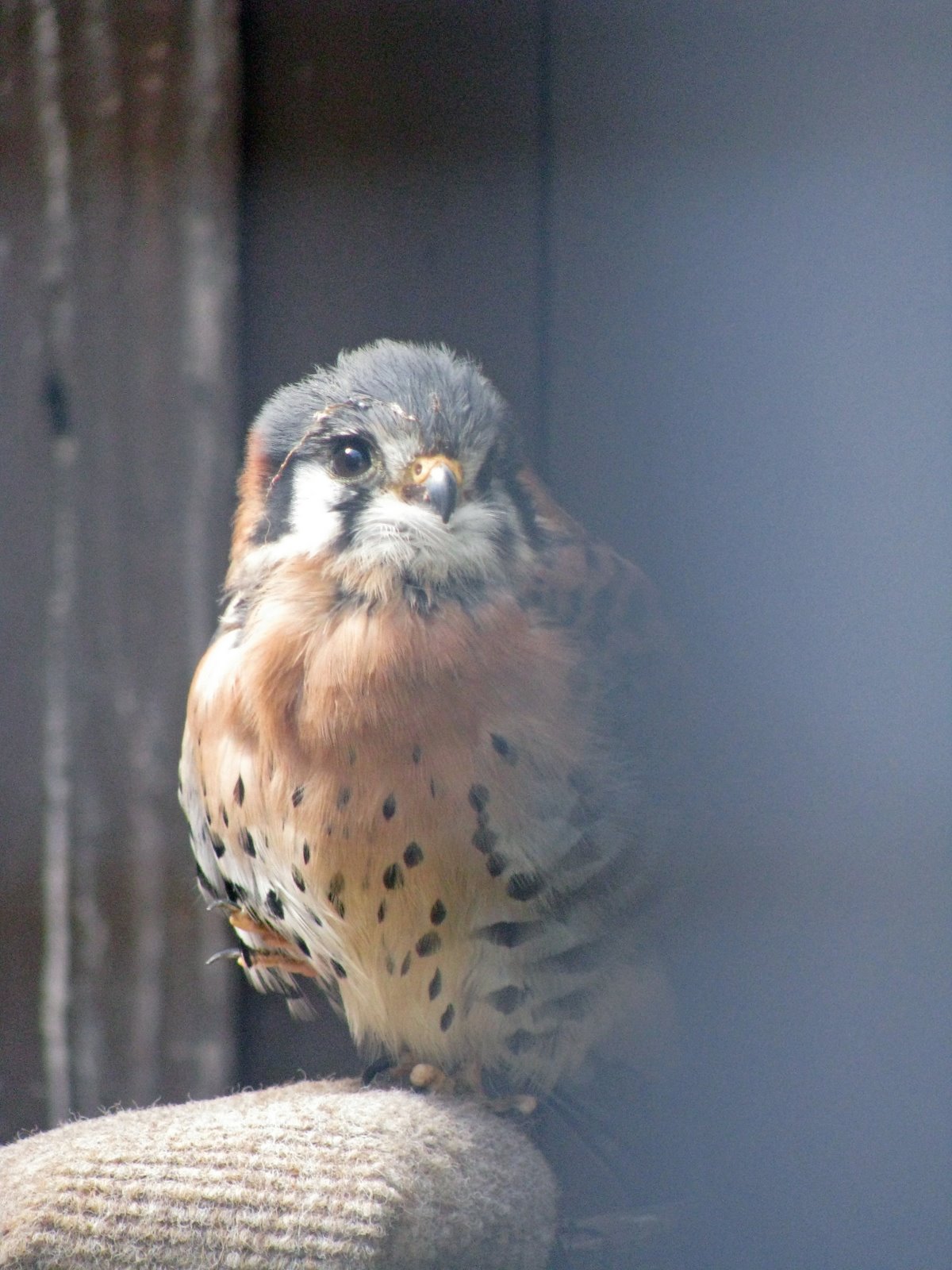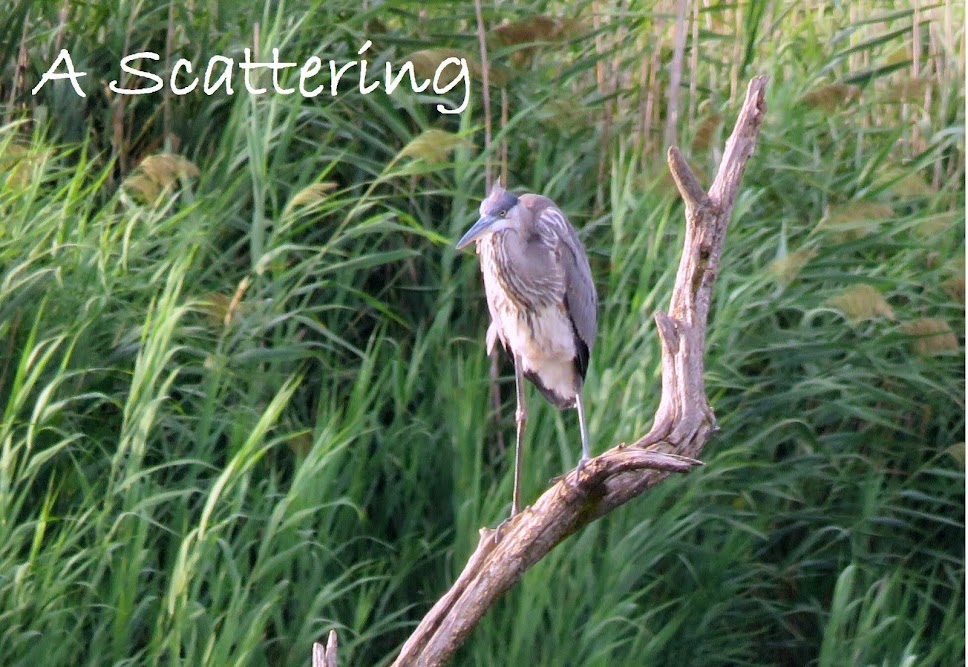Dart arrived at Hawk Creek as a tiny, fuzzy baby in the summer of 2005. He was raised with five other kestrels, and later he was placed with Arrow, the resident kestrel, so he would have a role model and company. When all the other baby kestrels were released successfully, this little bird was still in care. He has permanent physical problem that prevents him from flying beyond little flits from perch to perch, making him unable to survive in the wild. No one was sure what the next step would be in his care, and then he decided for himself by jumping up from the ground and landing on a volunteer’s glove, just like he was on an education program! Dash seems to enjoy his role and an education bird.
 Arrow came to Hawk Creek from a nature center in Rochester. This small falcon was “dive-bombing” everyone at a park. He was brought to a rehab facility and could not be released because he was raised by humans and became imprinted. This episode shows the dangers of imprinting wild animals on humans for both the animal and people.
Arrow came to Hawk Creek from a nature center in Rochester. This small falcon was “dive-bombing” everyone at a park. He was brought to a rehab facility and could not be released because he was raised by humans and became imprinted. This episode shows the dangers of imprinting wild animals on humans for both the animal and people. Legend, a male red-tailed hawk, was hit by a car and broke his wing. After three surgeries, his bones healed, but his tendons were permanently ruptured. He is now a favorite for education programs because although often seen in the wild, it is not often that people get to see this common hawk up-close. He can have quite a bossy "air" about him...
Legend, a male red-tailed hawk, was hit by a car and broke his wing. After three surgeries, his bones healed, but his tendons were permanently ruptured. He is now a favorite for education programs because although often seen in the wild, it is not often that people get to see this common hawk up-close. He can have quite a bossy "air" about him... The natural defense mechanism in turkey vultures like Barf (below) cannot be understated: when frightened or under threat, they have a unique ability to puke—up to several feet! There are two other "p" words associated with turkey vultures. They often poop on their own legs, using the evaporation of the water in the feces and/or urine to cool themselves, a process known as urohydrosis. It cools the blood vessels in the unfeathered tarsi and feet, and causes white uric acid to streak the legs. The final "p" is pick - a turkey vulture will pick it's nostrils with it's claws - 'nuff said....
The natural defense mechanism in turkey vultures like Barf (below) cannot be understated: when frightened or under threat, they have a unique ability to puke—up to several feet! There are two other "p" words associated with turkey vultures. They often poop on their own legs, using the evaporation of the water in the feces and/or urine to cool themselves, a process known as urohydrosis. It cools the blood vessels in the unfeathered tarsi and feet, and causes white uric acid to streak the legs. The final "p" is pick - a turkey vulture will pick it's nostrils with it's claws - 'nuff said....Barf is also a human imprint; three attempts to release him resulted in him simply following people around until he was fed, which is why he will remain at Hawk Creek as an example of what happens to releasable birds that are improperly kept.
 Dragon is a female Eurasian eagle owl. She arrived at the center from the World Bird Sanctuary of St. Louis, where she was bred for education. The largest owl species in the world, Dragon is aptly named with a fiery personality and huge wings.
Dragon is a female Eurasian eagle owl. She arrived at the center from the World Bird Sanctuary of St. Louis, where she was bred for education. The largest owl species in the world, Dragon is aptly named with a fiery personality and huge wings.  I took all photos in this entry and the one entitled "Other critters at Hawk Creek" with a Canon SX100.
I took all photos in this entry and the one entitled "Other critters at Hawk Creek" with a Canon SX100.
Excellent writeup, glad you enjoyed it! One small clarification -- the American Kestrels at Hawk Creek are Dart (not Dash) and Arrow.
ReplyDeleteDash would make a great name for a falcon, though!
Hope you can come out to the Renaissance Festival -- it's the last two weekends in July!
Very informative post. I thorouhly enjoyed it and I learned someting too-I didn't know that turky vultures pick their noses!
ReplyDelete